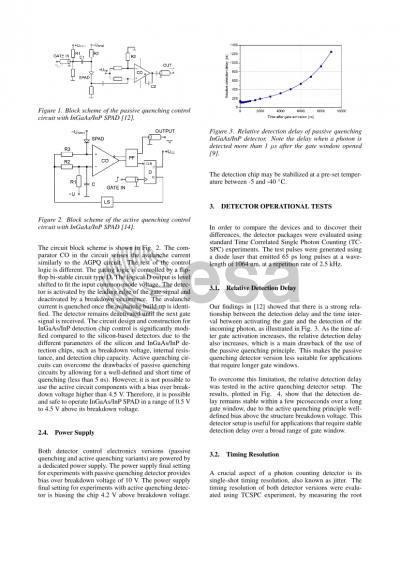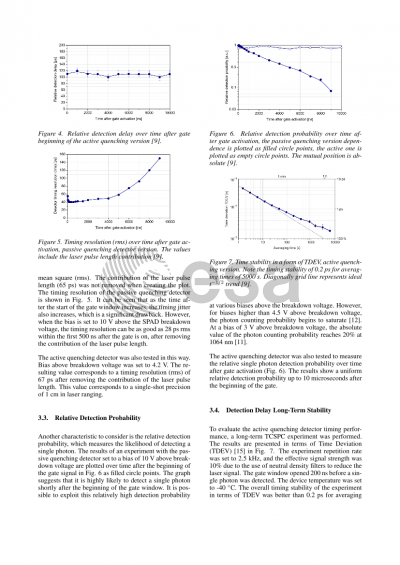Document details

Abstract
The newly optimized version of a single photon detector package based on commercially available InGaAs/InP was developed and tested for space applications including satellite laser ranging and orbiting space debris optical tracking. The detector package consists of an optimized power supply and a control circuit with active gating and active quenching logic. The detection chip active area is 80 um in diameter and it can register photons in the wavelength range from 950 to 1100 nm, making the detector attractive for laser ranging at 1064 nm. The detection chip is equipped with a three-stage thermoelectric cooler, which is operated by the power supply at -40 °C to maintain high quality of the detector key parameters. The power supply also provides stable bias to ensure the detector chip bias above breakdown voltage of 4.2 V. The detector key parameters were determined in time correlated single photon counting experiment at the Geodetic Observatory in Wettzell, Germany. The parameters of detection delay, detection probability and timing resolution are stable up to 10 us after the detector is gated. The timing resolution reaches below 60 ps rms. The long-term stability of the detector is better than 200 fs for averaging times of hours. This current detector version is suitable for space applications (namely SLR and space debris optical tracking) due to its sub-picosecond long-term detection delay stability and its single-shot precision of 1 cm in laser ranging.
Preview





